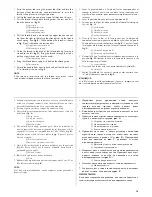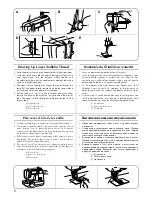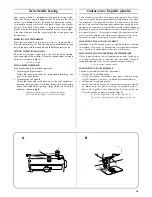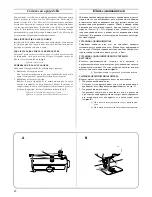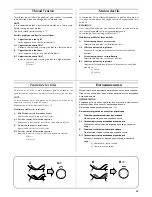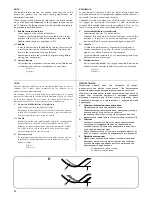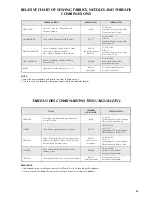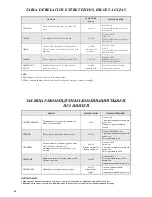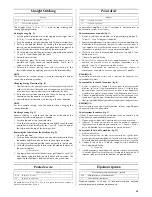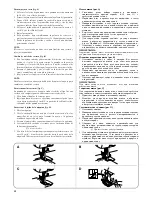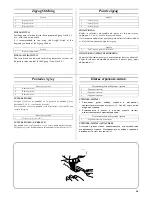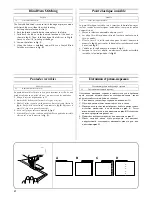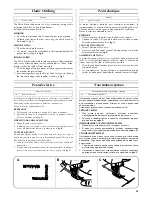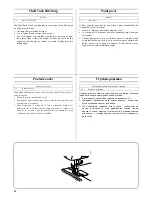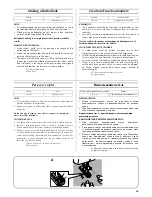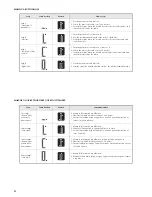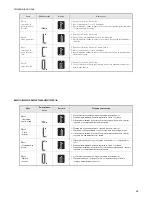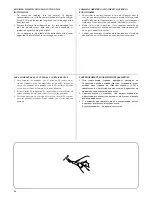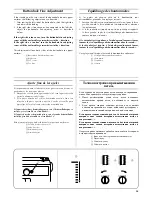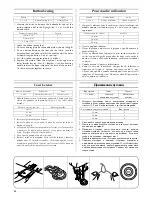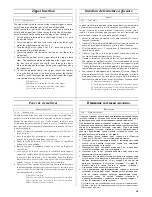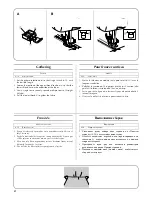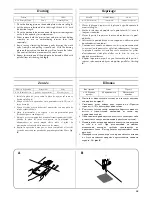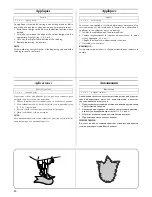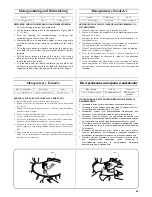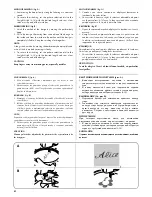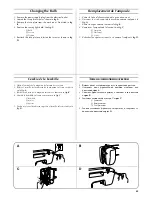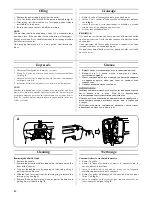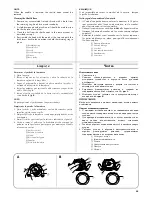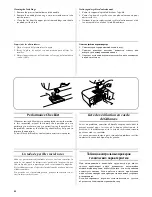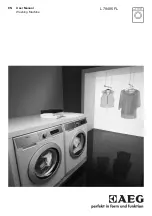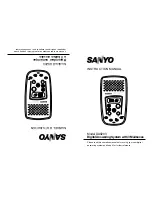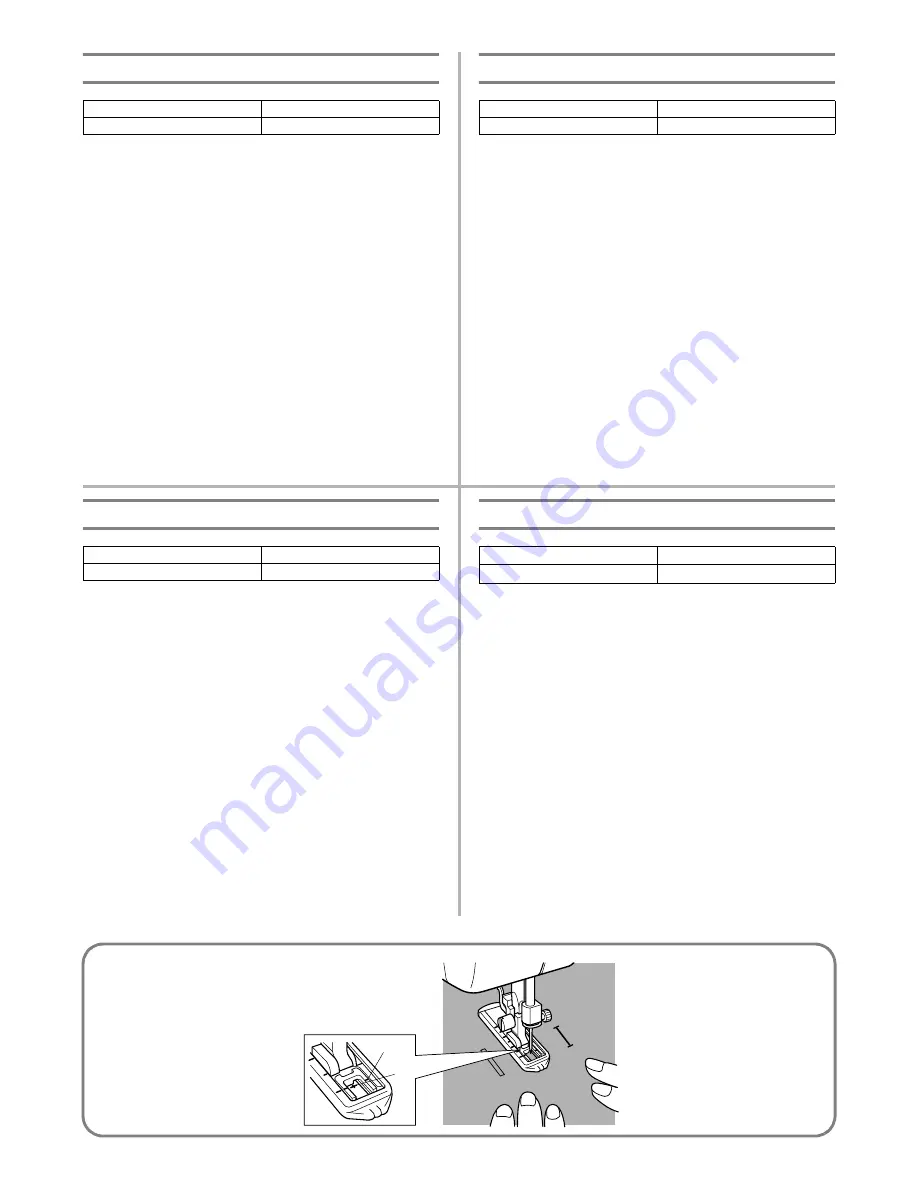
30
2
1
Making a Buttonhole
NOTE:
1. It is recommended to practice making a buttonhole on a scrap
piece of fabric before attempting it on the actual garment.
2. When making buttonholes on soft fabrics, place stabilizer
material on the underside of the fabric.
Buttonhole-making is a simple process that provides reliable
results.
MAKING A BUTTONHOLE
1. Using tailor’s chalk, mark the position and length of the
buttonhole on the fabric.
2. Attach the buttonhole foot and push the outside frame back
until the sliding insert is in the front.
3. The front bar tack will be sewn first. Place the fabric under the
presser foot so that the middle of the front of the tailor’s chalk
line is directly in the center of the presser foot and aligned
with the two red lines on the insert as shown below.
a
Front of chalk mark
b
Red lines
Pattern
Foot
1(b ac d)
Buttonhole foot
Création d’une boutonnière
REMARQUE:
1. Il est vivement conseillé de s’entraîner au préalable sur une
chute de tissu avant de faire la boutonnière sur l’ouvrage
souhaité.
2. Lors de la réalisation de boutonnières sur des tissus doux et
légers, placer une pièce de renfort à l’envers du tissu.
Facile à réaliser, la couture automatique de boutonnières à la
machine donne des résultats très fiables.
POUR FAIRE UNE BOUTONNIERE
1. A l’aide d’une craie de tailleur, marquer sur le tissu
l’emplacement et la longueur désirée de la boutonnière.
2. Installer le pied pour boutonnière et pousser le cadre extérieur vers
l’arrière, jusqu’à.ce que l’insertion à glissière se trouve devant.
3. La partie avant de la bride d’arrêt doit être cousue en premier.
Placer le tissu sous le pied-de-biche de telle manière que le
milieu de la ligne de craie avant se trouve au centre du pied-
de- biche, alignée avec les deux lignes rouges, comme le
montre la
fig. A.
a
Partie avant de la marque à la craie
b
Lignes rouges
Modèle
Pied-de-biche
1(b ac d)
Pied pour boutonnières
Para coser ojales
NOTA:
1. Se recomienda probar los ojales en un pedazo de tejido antes de
hacerlo realmente en las prendas.
2. Para hacer ojales en telidos muy finos, coloque entretela debajo
del tejido.
La función que le permite coser ojales es un proceso simple que
ofrece increíbles resultados.
COSIDO DEL OJAL
1. Con jaboncillo, marque la posición y el largo del ojal en el tejido.
2. Instale el prensatelas para ojales y vuelva a empujar el marco
exterior hasta que la inserción corredera se encuentre delante.
3. Primero, se cose el remate de la parte delantera del ojal. Coloque
el tejido debajo del prensatelas de tal manera que la marca del
centro de la línea de jaboncillo esté directamente en el centro del
prensatelas y quede alineada con las dos líneas rojas de la
inserción, tal como se ilustra.
a
Parte delantera de la marca con jaboncillo.
b
Líneas rojas
Pattern
Foot
1(b ac d)
Buttonhole foot
Выметывание петель
ПРИМЕЧАНИЕ:
1. Перед выметыванием петель на реальном изделии
рекомендуется сначала попрактиковаться на кусочке
ткани.
2. При выметывании петель на мягких тканях подложите под
ткань стабилизирующий материал.
Выметывание петель – простой процесс, обеспечивающий
надежный результат.
ВЫПОЛНЕНИЕ ВЫМЕТЫВАНИЯ ПЕТЕЛЬ
1. При помощи портновского мелка обозначьте
расположение и длину петли на ткани.
2. Установите лапку для вымётывания петель и нажимайте на
её внешнюю рамку по направлению назад до тех пор, пока
сдвижная вставка не окажется спереди.
3. Вначале выполняется передняя закрепка петли. Поместите
ткань под прижимной лапкой таким образом, чтобы
середина меловой отметки, соответствующей переднему
краю петли, оказалась прямо по центру лапки и была
совмещена с двумя красными рисками на вставке, как
показано ниже.
a
Передняя часть метки, нанесенной мелком на ткань
b
Красные риски
Положение ручки выбора строчки
Лапка
1 (b ac d)
Лапка для выметывания петель
A

